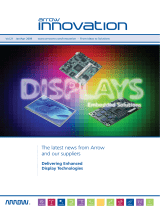
The crosstalk optical path is short, so the crosstalk pulse appears close to zero distance/delay. The amount of
crosstalk depends on the optical setup, cover glass geometry, and properties. Crosstalk can also vary during the
life of the product due to scratches or dirt on the cover glass.
Figure 2. Crosstalk critical paths
The figure above highlights the typical optical paths that the light, shot by the emitter, may follow before reaching
the receiver array.
The main paths represented are:
• target signal path, marked with 1 in the figure above
• the crosstalk signal path inside the cover glass, marked with 2 in the figure above
• the crosstalk signal path inside the air gap, marked with 3 in the figure above
The aim of the final application design is to minimize the crosstalk signals and maximize the target signal avoiding
any obstacles or attenuation along its path.
In general, the crosstalk signal increases with the thickness of the cover glass. To minimize the crosstalk signal, it
is recommended to use the thinnest cover glass choice available. To break the crosstalk path propagating through
the cover glass, it is recommended to use a light-blocker as shown in the figure below.
The crosstalk signal decreases when the air gap size is reduced, see Section 6 Conclusion and summary table
for more details. Therefore, it is recommended to have the smallest air gap possible.
To break the crosstalk path propagating through the air gap it is recommended to use a gasket. Specific dark
material like neoprene can be placed in the middle of the air gap space to break the crosstalk light path (Yoder,
P.R., Opto-Mechanical Systems Design, 3rd Ed., CRC Press, 2006 and Harris, D.C., Materials for Infrared glasss
and Domes, Properties and Performance, SPIE Press, Bellingham, 1999).
For air gaps >0.7 mm, a gasket is required to ensure that the crosstalk signal level is kept below the maximum
recommended limit of 100 kcps.
The crosstalk effect has several negative impacts, such as an increase in:
• signal loss
• ranging non-linearity
• ranging standard deviation
AN5856
System crosstalk
AN5856 - Rev 1 page 3/19



















